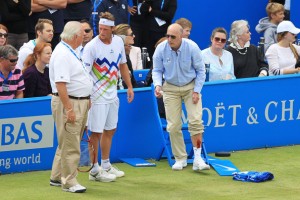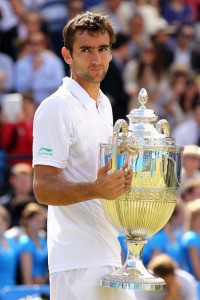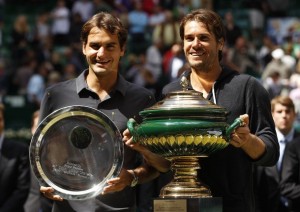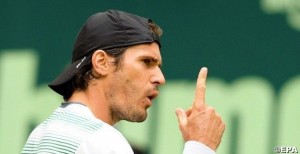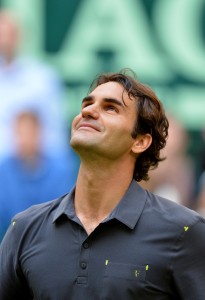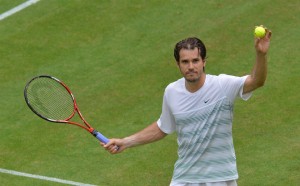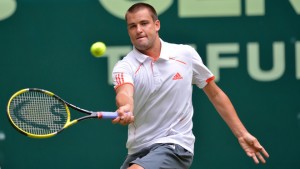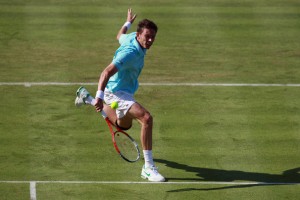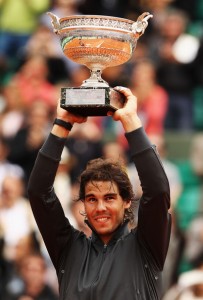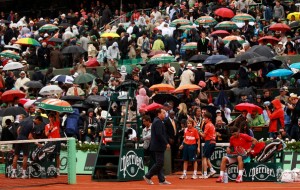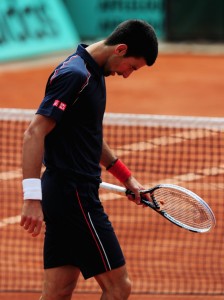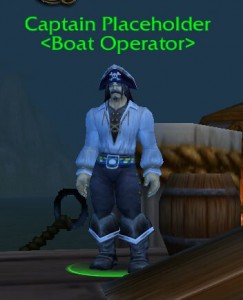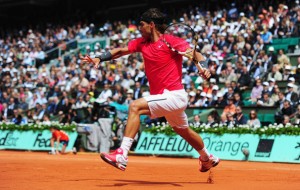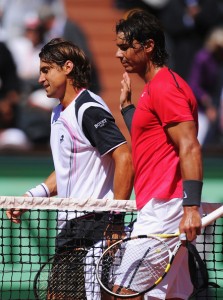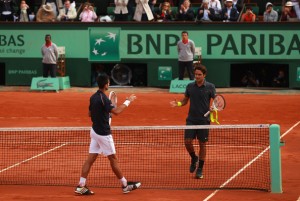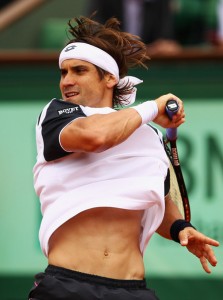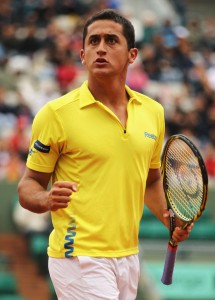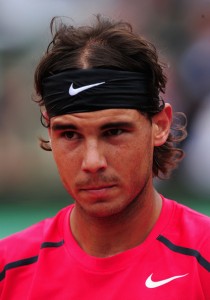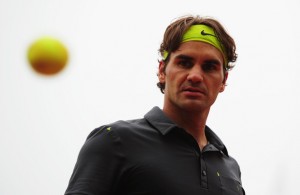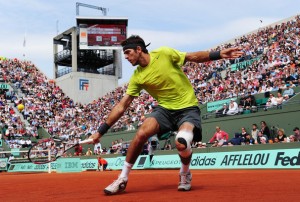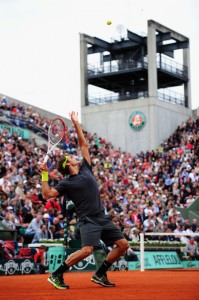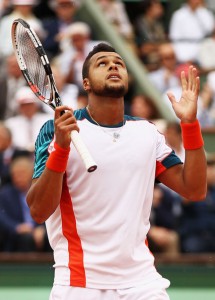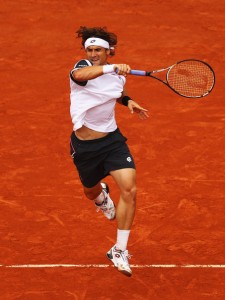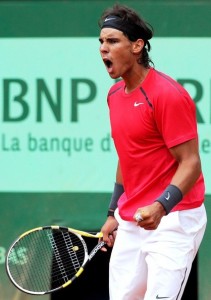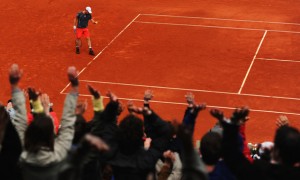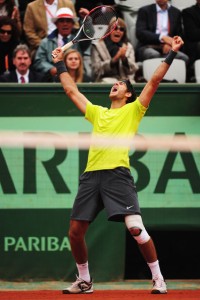The second week of the grass court season almost never sustains the excitement and intrigue of the first, especially when the first ends in a blood-haze of punctured shins. For all that I believe the grass season should be longer, I think, given the reality, most people just want Wimbledon to start by now. Some of the players seem to feel that way, including Richard Gasquet. Today’s highlight was the news that Brian Baker has qualified for the main draw, thereby justifying or ridiculing Wimbledon’s denial of a wildcard, depending on your point of view. 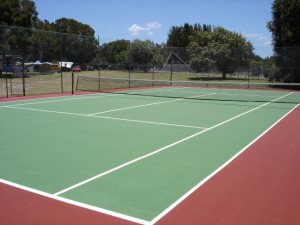 Today’s lowlight was the hopeless match between Fabio Fognini and Bernard Tomic at Eastbourne, which didn’t have to end the way it did, and for a long time didn’t feel like it was going to end at all.
Today’s lowlight was the hopeless match between Fabio Fognini and Bernard Tomic at Eastbourne, which didn’t have to end the way it did, and for a long time didn’t feel like it was going to end at all.
But in lieu of talking about that, I’m going to travel back twenty-three years to a suburban tennis centre in Canberra, Australia, and to a defining rite of passage from my youth. For those who’ve never been there, Canberra is a modestly-proportioned city that happens to be the capital of Australia. Visitors to the city sometimes feel it to be charmless. The truth is, it takes years of living there to confirm this beyond doubt.
Rites of passage take on many different forms all around the world. Some are organised, some are chaotic. Some are benign, many aren’t. As regards males, most rites of passage are designed to help a boy become a man. In rare cases, they are designed to help a boy become a eunuch. Poling, common in my youth, is one such case.
The origins of poling are shrouded in blood-haze, although academics agree it isn’t Polish (they haven’t ruled out Germany). It is not a mechanically complicated process. It involves being picked up horizontally by a bunch of guys, having your legs placed on either side of a metal pole, and then driven with great force until either the pole or your crotch give way. Given that the poles are invariably selected for their sturdiness, the deck is stacked against said crotch remaining intact. It goes without saying that in classic poling, the ‘polee’ is a non-consenting party. When this basic condition is not met, poling is merely a fetish. This practice will not be considered here.
With that explanation in place, let’s return to Canberra, where your writer is a thirteen year old boy. It was late in the day, and I was just leaving the tennis court, where I had comported myself with consummate grace, considerable artistry and – if I may say – a certain derring-do in losing 6/2 6/1. The afternoon sun was coming in low, but with a pronounced boldness, a fitting tribute to the glorious Spring day just ending, and a rich promise of the Summer approaching. I bid my friend farewell, complimenting him on his play while secretly knowing that I was laying strong foundations for future dominance. I noticed some girls from school standing nearby. They had just completed an after-school tennis class. I fancied several of them, and felt sure that the feeling was reciprocated in the case of one. The scene was idyllic, and I wasn’t to know that I was about to be humiliated as never before. The hour of my poling had arrived.
It must be said that being physically restrained and launched junk-first at a pole is not really humiliating on its own, even for teenagers (for whom hot-cheeked mortification is the factory setting). It’s not like there’s much you can do about it, although a show of resistance is expected. Indeed, if played correctly the experience might even be parlayed into a badge of honour, a large badge that might then be artfully worn over the wreckage of your scrotum. You are now part of an exclusive club, albeit one whose activities are mainly limited to sitting around nursing and comparing mashed nuts. Sadly, the particulars of my situation were such that even honour proved unsalvageable. I belong to no club. I doubt whether there are even support groups, even in America.
To my knowledge – and I’ll admit I have not confirmed this recently – I remain the only person to have been poled exclusively by girls. A rare accolade, I know. And while you may think this means I got off lightly – a grazing in lieu of a pulping – rest assured that even thirteen year old girls in sufficient numbers can, when operating with fey cohesion, achieve impressive pole-ward velocity. It helped that their ringleader was Sam, a burly and especially androgynous lass who wore her hair short but for a rats-tail of particular magnificence. The year was 1989, and Sam’s hairdo was widely admired, as were the Megadeth and Iron Maiden patches meticulously sewn to her denim jacket.
I was set upon suddenly by those young ladies from school, of which there were perhaps half a dozen, some of whom, as I’ve suggested, were quite comely. Under kinder circumstances, I would have been delighted for any of them to pay any attention to my genitals, and had spent no few hours in the idle contemplation of precisely that, although I’d envisaged caresses more lingering and less lethal. A case of being careful what you wish for, I suppose. Anyway, I was hoisted aloft, hollering ‘Unhand me, you louts!’, or something more appropriate to a teenage boy, something laced with expletives (‘Heck’, probably, perhaps a ‘Darn it!’). I dropped my tennis racquet, a Wilson Pro-Staff whose subtleties I would never master, and the can of balls, which spilt and scattered everywhere, a fairly fitting symbol for the catastrophic interaction between poll and crotch that was about to transpire. Sam manfully did the heavy lifting, whilst directing her team expertly. I was efficiently positioned, and then driven with great force into their chosen pole. Sadly, this still wasn’t the most shaming part of it, even if it was the most public. People were watching by now.
In a perverse way, I’d like to tell you it felt exactly like you’d think it would. But it didn’t. Somehow, despite the pole being two or three inches in diameter, and having been lined-up with the utmost care, it missed. That’s right: I was hit flush in the loins with a large metal pole, and it utterly avoided anything of vital importance – I now have two lovely children – and didn’t hurt much at all. Instinctively I knew that admitting this would be the most egregious faux pas I could commit. One day I might dine out on the tale of being molested by six teenage girls, if recounted with the right degree of self-deprecation. But there’s just no way of selling even the implication of a package so miniscule that it could easily elude a full-frontal assault. That would stick forever.
Thus I doubled over in a fair approximation of indescribable agony. The fact they’d unceremoniously dumped me onto the cement after contact helped. In any case, my performance was convincing enough for dear sadistic Sam. Surveying the scene, she pronounced herself satisfied. I had apparently learned my lesson. She and the others moved away, pleased. No one came to help. I collected my racquet, and my balls.
Indeed I had learned my lesson. I’d learned several lessons, in fact. Firstly, that there are multiple layers to all social transactions, which are therefore like an onion. In my case, like an onion that had been attacked with a mallet, or David Nalbandian’s foot, and somehow survived. Secondly, I’d learned that at no point would I ever have any chance of intimacy with any of those girls. The only exception was the brutish Sam, who I later found out had a crush on me. Crush, I reasoned, was the appropriate term. Nothing ever came of it, though I did later beat her at tennis, 6/2 6/1. Sweet revenge.

